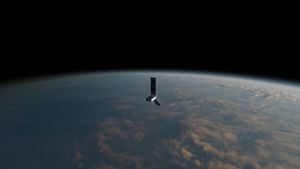JAKARTA The US Aeronautics and Space Agency (NASA) announced that it is working with IBM Research, IBM's research division, in developing the latest Artificial Intelligence (AI) model.
The AI model, referred to as the basic model of Privthi's weather climate, was created to support various weather and climate applications. By utilizing AI, weather and climate applications can be used as analytical media for climate scenarios.
NASA says that the basic model of Privthi is trained with a wide data set so that it can be adjusted to various applications. The data used comes from the Modern Era Retrospective Analysis for Research and Applications (MERRA-2).
After being trained, this basic model utilizes AI's learning ability to apply data in various additional scenarios. According to NASA's Director of Earth Sciences Division Karen St. Germain, this basic model developed can be beneficial for humans.
NASA's basic model will help us produce tools that humans can use: weather, seasonal and climate projections to help inform decisions on how to prepare, respond, and carry out mitigation," Germain said.
Meanwhile, NASA's Chief Science Data Officer Kevin Murphy explained that this AI model will significantly change data accessibility. In addition, barriers to using NASA's scientific data will also decrease.
SEE ALSO:
"Our open approach to this model sharing invites the global community to explore and take advantage of the capabilities we have developed, ensuring that NASA's investment enriches and provides benefits to everyone," explains Murphy.
The basic model of Privthi is an open collaboration so that its developers are not only IBM Research and NASA. There are also the Oak Ridge National Laboratory and the Inter-Institutional Implementation Team and the Advanced Concept (IMPACT) from NASA.
Privthi can capture the dynamics of atmospheric physical complexes that make it easier for scientists to research. This basic model can be used to predict and detect bad weather patterns or natural disasters, as well as increase spatial resolution in global climate simulations.
The English, Chinese, Japanese, Arabic, and French versions are automatically generated by the AI. So there may still be inaccuracies in translating, please always see Indonesian as our main language. (system supported by DigitalSiber.id)















